How and Why the Media is Biased Against Israel
February 25, 2015
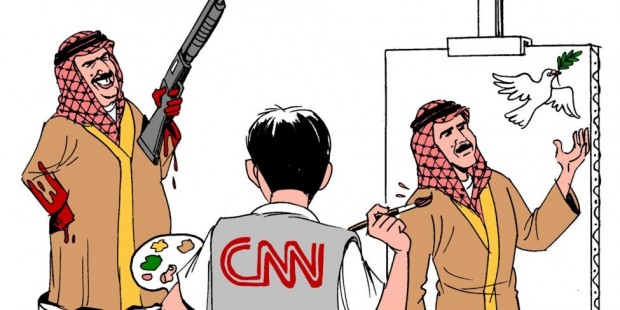
MYTH
“Media coverage of the Arab world is objective.”
FACT
When asked to comment on what many viewers regard as CNN’s bias against Israel, Reese Schonfeld, the network’s first president explained, “When I see them [reporters] on the air I see them being very careful about Arab sensibilities.” Schonfeld suggested the coverage is slanted because CNN doesn’t want to risk the special access it has in the Arab world.1 Other networks engage in similar self-censorship.
In Arab countries, journalists are usually escorted to see what the dictator wants them to see or they are followed. Citizens are warned by security agencies, sometimes directly, sometimes more subtly, that they should be careful what they say to visitors.
In Lebanon during the 1980s, for example, the Palestine Liberation Organization (PLO) had reporters doing their bidding as the price for obtaining interviews and protection. During the Palestinian War, Israeli journalists were warned against going to the Palestinian Authority and some received telephone threats after publishing articles critical of the PA leadership. 2
In the case of coverage of the PA, the Western media relies heavily on Palestinian assistants to escort correspondents in the territories. In addition, Palestinians often provide the news that is sent out around the world. For example, at least two journalists working for Agence France-Presse simultaneously worked for PA media outlets. An Associated Press correspondent also worked for the PA’s official newspaper. One veteran journalist said, “It’s like employing someone from the [Israeli] Government Press Office or one of the Israeli political parties to work as a journalist.” 3
“By my own estimate,” journalist Ehud Ya’ari wrote, “over 95 percent of the TV pictures going out on satellite every evening to the various foreign and Israeli channels are supplied by Palestinian film crews. The two principle agencies in the video news market, Associated PressTN and Reuters TV, run a whole network of Palestinian stringers, freelancers and fixers all over the territories to provide instant footage of the events. These crews obviously identify emotionally and politically with the intifada and, in the ‘best’ case, they simply don’t dare film anything that could embarrass the Palestinian Authority. So the cameras are angled to show a tainted view of the Israeli army’s actions, never focus on the Palestinian gunmen and diligently produce a very specific kind of close-up of the situation on the ground.” 4
A particularly egregious incident occurred in October 2000 when two Israelis were lynched in Ramallah by a Palestinian mob. According to reporters on the scene, the Palestinian police tried to prevent foreign journalists from filming the incident. One Italian television crew managed to film parts of the attack and these shocking images ultimately made headlines around the world. A competing Italian news agency took a different tack, placing an advertisement in the PA’s main newspaper, Al Hayat-Al-Jadidah, explaining that it had nothing to do with filming the incident. 5
If a news organization strays from the pro-Palestinian line, it comes under immediate attack. In November 2000, for example, the Palestinian Journalist’s Union complained that the Associated Press was presenting a false impression of the Palestinian War. The Union called Associated Press’s coverage a conscious crime against the Palestinian people and said it served the Israeli position. The Union threatened to adopt all necessary measures against Associated Press staffers as well as against Associated Press bureaus located in the PA if the agency continued to harm Palestinian interests. 6
“We were filming the beginning of the demonstration. Suddenly, a van pulled in hurriedly. Inside, there were Fatah militants. They gave their orders and even distributed Molotov cocktails. We were filming. But these images, you will never see. In a few seconds, all those youngsters surrounded us, threatened us, and then took us away to the police station. There, we identified ourselves but we were compelled to delete the controversial pictures. The Palestinian Police calmed the situation but censored our pictures. We now have the proof that those riots are no longer spontaneous. All the orders came from the Palestinian hierarchy.” — Jean Pierre Martin 7
MYTH
“Journalists covering the Middle East are driven by the search for the truth.”
FACT
It will come as no surprise to learn that journalists in the Middle East share an interest in sensationalism with their colleagues covering domestic issues. The most egregious examples come from television reporters whose emphasis on visuals over substance encourages facile treatment of the issues. For example, when NBC’s correspondent in Israel was asked why reporters turned up at Palestinian demonstrations in the West Bank they knew were being staged, he said, “We play along because we need the pictures.” 8 The networks can’t get newsworthy pictures from closed societies such as Syria, Saudi Arabia, Iran or Libya, so events in Israel routinely make headlines while the Arab world is ignored.
Israel often faces an impossible situation of trying to counter images with words. “When a tank goes into Ramallah, it does not look good on TV,” explains Gideon Meir of the Israeli Foreign Ministry. “Sure we can explain why we are there, and that’s what we do. But it’s words. We have to fight pictures with words.” 9
The magnitude of the problem Israel confronts is clear from Tami Allen-Frost, deputy chairman of the Foreign Press Association and a producer for Britain’s ITN news, who says “the strongest picture that stays in the mind is of a tank in a city” and that “there are more incidents all together in the West Bank than there are suicide bombings. In the end, it’s quantity that stays with you.” 10
One cause of misunderstanding about the Middle East and bias in media reporting is the ignorance of journalists about the region. Few reporters speak Hebrew or Arabic, so they have little or no access to primary resources. They frequently regurgitate stories they read in English language publications from the region rather than report independently. Media outlets also often rely on stringers—local Arabs who help them find stories—whose biases are often interjected into the coverage. When they do attempt to place events in historical context, they often get the facts wrong and create an inaccurate or misleading impression. To cite one example, during a recitation of the history of the holy sites in Jerusalem, CNN’s Garrick Utley reported that Jews could pray at the Western Wall during Jordan’s rule from 1948 to 1967. 11 In fact, Jews were prevented from visiting their holiest shrine. This is a critical historical point that helps explain Israel’s position toward Jerusalem.
MYTH
“Arab officials tell Western journalists the same thing they tell their own people.”
FACT
Arab officials often express their views differently in English than they do in Arabic. They express their true feelings and positions to their constituents in their native language. For external consumption, however, Arab officials have learned to speak in moderate tones and often relate very different views when speaking in English to Western audiences. Long ago, Arab propagandists became more sophisticated about how to make their case. They now routinely appear on American television news broadcasts and are quoted in the print media and come across as reasonable people with legitimate grievances. What many of these same people say in Arabic, however, is often far less moderate and reasonable. Since Israelis can readily translate what is said in Arabic they are well aware of the views of their enemies. Americans and other English-speakers, however, can easily be fooled by the slick presentation of an Arab propagandist.
To give just one example, Palestinian peace negotiator Saeb Erekat is frequently quoted by the Western media. After the brutal murder of two Israeli teenagers on May 9, 2001, he was asked for a reaction. The Washington Post reported his response:
Saeb Erekat, a Palestinian official, said in English at a news conference that “killing civilians is a crime, whether on the Palestinian or the Israeli side.” The comment was not reported in Arabic-language Palestinian media. 12
The unusual aspect of this story was that the Post reported the fact that Erekat’s comment was ignored by the Palestinian press.
In an interview with Israeli TV in March 2011, Palestinian Authority Chairman Mahmoud Abbas condemned the Palestinians’ naming of a square after Dalal Mughrabi, the terrorist who led the most lethal terror attack in Israel’s history. When speaking to Palestinians in 2010, however, Abbas said, “Of course we want to name a square after her . . . We carried out a military action; can I then later renounce all that we have done?” 13
Over the years Yasser Arafat was famous for saying one thing in En-glish to the Western media and something completely different to the Arabic press in his native tongue. This is why the Bush Administration insisted that he repeat in Arabic what he said in English, in particular condemnations of terrorist attacks and calls to end violence.
It is more difficult for Arab leaders to get away with doubletalk today because their Arabic remarks are now translated by watchdog organizations and disseminated in English.
Case Study
A Washington Post story about the “cycle of death” in the West Bank included an interview with Raed Karmi, an official in Fatah, the dominant faction in Yasser Arafat’s Palestine Liberation Organization. The report begins with the observation that Karmi is running out to join a battle against Israeli soldiers and grabs an M-16 assault rifle. What the story fails to mention is that only Palestinian police are supposed to be armed. The report implies that Israeli and Palestinian violence is equivalent in this “cycle” because Karmi said he was acting to avenge the death of a Palestinian who the Israelis assassinated for organizing terrorist attacks. Karmi admits that he participated in the kidnapping and execution-style murder of two Israelis who had been eating lunch in a Tulkarm restaurant. Karmi was jailed by the Palestinian Authority, but he was released after just four months and subsequently killed four more Israelis, including a man buying groceries and a driver who he ambushed. “I will continue attacking Israelis,” he told the Post. 14
MYTH
“Israelis cannot deny the truth of pictures showing their abuses.”
FACT
A picture may be worth a thousand words, but sometimes the picture and the words used to describe it are distorted and misleading. Photographers understandably seek the most dramatic pictures they can find, and those suggesting that brutal Israeli Goliaths are mistreating suffering Palestinian Davids are especially appealing, but the context is often missing.
In one classic example, the Associated Press circulated a dramatic photo of an angry baton-wielding Israeli soldier standing over a bloody young man. It appeared the soldier had just beaten the youth. The picture appeared in the New York Times and spurred international outrage because the caption, supplied by Associated Press, said, “An Israeli policeman and a Palestinian on the Temple Mount.” 15 It turned out, however, the caption was inaccurate and the photo actually showed an incident that might have conveyed almost the exact opposite impression had it been reported correctly. The victim was not a Palestinian beaten by an Israeli soldier, it was a policeman protecting an American Jewish student, Tuvia Grossman, who had been riding in a taxi when it was stoned by Palestinians. Grossman was pulled out of the taxi, beaten and stabbed. He broke free and fled toward the Israeli policeman. At that point a photographer snapped the picture.
Besides getting the victim wrong, Associated Press also inaccurately reported that the photograph was taken on the Temple Mount. When Associated Press was alerted to the errors, it issued a series of corrections, several of which still did not get the story straight. As is usually the case when the media makes a mistake, the damage was already done. Many outlets that had used the photo did not print clarifications. Others issued corrections that did not receive anywhere near the prominence of the initial story.
Another example of how pictures can be both dramatic and misleading was a Reuters photo showing a young Palestinian being arrested by Israeli police on April 6, 2001. The boy was obviously frightened and wet his pants. The photo attracted worldwide publicity and reinforced the media image of brutal Israelis who abuse innocent children. In this instance it is the context that is misleading. Another Reuters photographer snapped another picture just before the first one was taken. It showed the same boy participating in a riot against Israeli soldiers. Few media outlets published this photo.
MYTH
“The press makes no apologies for terrorists.”
FACT
The media routinely accepts and repeats the platitudes of terrorists and their spokespersons with regard to their agendas. The press gullibly treats claims that attacks against innocent civilians are acts of “freedom fighters.” In recent years some news organizations have developed a resistance to the term “terrorist” and replaced it with euphemisms such as “militant” because they don’t want to be seen as taking sides or making judgments about the perpetrators.
For example, after a Palestinian suicide bomber blew up a pizza restaurant in downtown Jerusalem on August 9, 2001, killing 15 people, the attacker was described as a “militant” (Los Angeles Times, Chicago Tribune, NBC Nightly News). When a Palestinian woman walked into a crowded beach restaurant in Haifa on October 4, 2003, and detonated a bomb that killed 21 people, including four children, the Reuters account said she had waged an “attack” in retaliation for previous Israeli army actions and that the bombing showed that Palestinian officials had failed to “rein in the militants.” 17 The heinous attack on March 11, 2011, in which two Palestinian terrorists infiltrated the Israeli town of Itamar in the West Bank and brutally murdered a family of five, including a three-month-old infant, was described by the Los Angeles Times as part of a “continuing cycle of violence.” 18 After terrorists killed eight Israelis and wounded more than 30 in multiple attacks near Eilat, the New York Times referred to the perpetrators only as “armed attackers” and reported that Israeli counterstrikes killed Palestinians from a “militant group.” 19
Clifford May of the Middle East Information Network pointed out the absurdity of the media coverage: “No newspaper would write, ‘Militants struck the World Trade Center yesterday,’ or say, ‘They may think of themselves as freedom fighters, and who are we to judge, we’re news people.’ ” 20
One of the best examples of how the press sometimes distinguishes terrorist attacks against other nations was a list of “recent terror attacks around the world” disseminated by the Associated Press, probably the most influential news service in the world. The list cited 15 terrorist incidents during the five-year period between August 1998 and August 2003. During that period, more than 800 Israelis were murdered in terrorist attacks, but not one of the incidents in Israel made the list. 21 Similarly, when Associated Press released its Year in Photos 2003, six of the 130 photos chosen related to human suffering in the Israeli-Palestinian conflict. All six were of Palestinians.
In a memo to the New York Times foreign desk, former Jerusalem bureau chief James Bennet criticized his paper’s reluctance to use the word “terrorism.” He said, “The calculated bombing of students in a university cafeteria, or of families gathered in an ice cream parlor, cries out to be called what it is. . . . I wanted to avoid the political meaning that comes with ‘terrorism,’ but I couldn’t pretend that the word had no usage at all in plain English.” Bennett acknowledged that not using the term was “a political act in itself.” 22
Rather than apologize for terrorists, the media sometimes portrays the victims of terror as equivalent to the terrorists themselves. For example, photos are sometimes shown of Israeli victims on the same page with photos of Israelis capturing terrorists, giving the sense, for example, that the Palestinian held in handcuffs and blindfolded by a soldier is as much a victim as the shocked woman being helped from the scene of a suicide bombing.
In one of the most egregious examples, after a suicide bombing in Petah Tikva on May 27, 2002, CNN interviewed the mother of the bomber, Jihad Titi. The parents of a 15-month-old girl killed in the attack, Chen and Lior Keinan, were also interviewed. The interviews with the Keinans were not shown on CNN international in Israel or elsewhere around the world until hours after the interview with Titi’s mother had been broadcast several times.
This was too much even for CNN, which subsequently announced a policy change whereby it would no longer “report on statements made by suicide bombers or their families unless there seemingly is an extraordinarily compelling reason to do so.” 23
“By any logic, militants engaged in warfare don’t blow up little babies.” — Tom Fiedler, Executive Editor, Miami Herald 16
MYTH
“The Palestinian Authority places no restrictions on reporters.”
FACT
A case study of the Palestinian Authority’s idea of freedom of the press occurred following the September 11 terrorist attacks against the United States. An Associated Press cameraman filmed Palestinians at a rally in Nabluscelebrating the terror attacks and was subsequently summoned to a Palestinian Authority security office and told that the material must not be aired.
Ahmed Abdel Rahman, Arafat’s Cabinet secretary, said the Palestinian Authority “cannot guarantee the life” of the cameraman if the footage was broadcast. 24 The cameraman requested that the material not be aired and, Associated Press never released the footage.
More than a week later, the Palestinian Authority returned a videotape it confiscated from the Associated Press showing a Palestinian rally in the Gaza Strip in which some demonstrators carried posters supporting Osama bin Laden. Two separate parts of the six-minute tape involving “key elements“” were erased by the Palestinians, according to an Associated Press official. 25
In October 2001, after the United States launched attacks against Afghanistan, Palestinians supporting Osama bin Laden staged rallies in the Gaza Strip that were ruthlessly suppressed by Palestinian police. The PA took measures to prevent any media coverage of the rallies or the subsequent riots. The Paris-based Reporters Without Frontiers issued a scathing protest to the PA and also objected to Palestinian orders not to broadcast calls for general strikes, nationalistic activities, demonstrations or other news without permission from the PA. The aim of the press blackout was expressed by an anonymous Palestinian official, “We don’t want anything which could undermine our image.” 26
In August 2002, the Palestinian journalists’ union banned journalists from photographing Palestinian children carrying weapons or taking part in activities by terrorist organizations because the pictures were hurting the Palestinians’ image. The ban came after numerous photographs were published showing children carrying weapons and dressing up like suicide bombers. Another group, the Palestinian Journalists Syndicate, issued a similar ban that included photographing masked men. The Foreign Press Association expressed “deep concern” over the effort to censor coverage, and the threats of sanctions against journalists who disregarded the ban. 27
In July 2004, as Gaza became increasingly unstable, and protests were being mounted against corruption in thePalestinian Authority and the leadership of Arafat, Palestinian journalists covering the crisis received death threats. 28Numerous incidents have also been reported of physical attacks on journalists who offended PA officials. A reporter for a Saudi-owned news channel was wounded by gunfire when he was driving through the Gaza Strip. He was then dragged from his car and beaten because his station had allowed criticism of Yasser Arafat and other officials. A week later, 100 Palestinian journalists went to Arafat’s headquarters in Ramallah to pledge allegiance to him. 29
The Palestinian Authority and Hamas were accused of systematically abusing Palestinian journalists in a Human Rights Watch report released April 6, 2011. The report documents cases of torture, beatings and arbitrary detainment of journalists by security forces and says that “severe harassment by Palestinian Authority and Hamas security forces targeting Palestinian journalists in the West Bank and Gaza has had a pronounced chilling effect on freedom of expression.”
For example, Hamas security forces detained an Al Quds radio reporter and attacked him “in a morgue where he had reported on a man, supposedly killed by Israeli military attack, who was discovered still to be alive.” 30
The Center for Development and Media Freedoms, a Palestinian rights group, said that the number of attacks by Palestinians on journalists, arrests and confiscations of equipment rose by 45 percent in 2010. 31
In June 2011, the Palestinian Authority banned Palestinian journalists from reporting about the findings of the Ramallah-based Independent Commission for Human Rights concerning abuse of human rights by the PA andHamas. “Assaults on journalists and censorship and restrictions on freedom of expression are still a dreadful nightmare for the journalists,” said Palestinian reporter Mustafa Ibrahim. “Journalists avoid covering events out of fear of being targeted or arrested by [Palestinian] security forces in the West Bank.” 32
In February 2012, two Palestinian journalists were arrested by the PA supposedly as an attempt to suppress dissent. One of the journalists, Yousef Shayeb of the Jordanian paper Al-Ghad, had reported on corruption in a Palestinian diplomatic mission while the second, Rami Samara of the Palestinian agency Wafa, had outwardly criticized President Abbas. “Before this detention, I thought that we, the Palestinian people, enjoy wide freedom, but after what I saw, I think I’m being followed by the intelligence in every step of my life,” Samara said.32a
MYTH
“The media carefully investigates Palestinian claims before publicizing them.”
FACT
Palestinians have learned that they can disseminate almost any information to the media and it will be published or broadcast somewhere. Once it is picked up by one media outlet, it is inevitably repeated by others. Quickly, misinformation can take on the appearance of fact, and while Israel can present evidence to correct the inaccuracies being reported, the damage is already done. Once an image or impression is in someone’s mind, it is often difficult, if not impossible to erase it.
For example, a Palestinian boy was stabbed to death in a village near a Jewish settlement. The media repeated Palestinian claims that the boy was attacked by settlers when in fact he had been killed in a brawl between rival Palestinian clans. 33 On another occasion, a 10-year-old Palestinian girl was allegedly killed by IDF tank fire. This time it turned out she died as a result of Palestinians shooting in the air to celebrate the return of Muslim worshipers from Mecca. 34
One staple of Palestinian propaganda has been to distribute false statistics in an effort to make Israeli actions look monstrous. For example, if an incident involves some death or destruction, they can grossly exaggerate the figures and a gullible media will repeat the fabricated data until they become widely accepted as accurate. This occurred, for example, during the Lebanon War when Yasser Arafat’s brother claimed that Israel’s operations had left 600,000 Lebanese homeless. He made the number up, but it was repeated by the International Committee of the Red Cross and publicized in the media. By the time the ICRC repudiated the figure, it was too late to change the impression that Israel’s military operation to defend itself from terrorist attacks on its northern border had created an unconscionable refugee problem. 35
The Palestinians were caught lying again in April 2002 when Palestinian spokesman Saeb Erekat told CNN on April 17 that at least 500 people were massacred in Jenin and 1,600 people, including women and children, were missing. Erekat produced no evidence for his claim and the Palestinians’ own review committee later reported a death toll of 56, of whom 34 were combatants. No women or children were reported missing. 36
What is perhaps more outrageous than the repetition of Erekat’s lie is that media outlets continue to treat him as a legitimate spokesperson, giving him access that allows him to disseminate misinformation.
MYTH
“Media coverage of Operation Cast Lead was fair and accurate.”
FACT
Israel’s enemies will do everything possible to manipulate the media to influence public opinion. Israel will be accused of massacres, fabricated casualty figures will be distributed, photographs will be doctored and journalists will be threatened. These and other ploys will be used to create sympathy for the Palestinians and cast aspersions on Israeli forces in the hope of turning world opinion against Israel.
Too often, irresponsible journalists have repeated unverified and often inaccurate information in their haste to be the first to report a story. In an effort to present an evenhanded account, some reporters have the mistaken belief that allowing an Arab spokesperson to lie and then giving an Israeli a chance to respond represents a balanced account. This is like allowing a spokesperson to accuse Israelis of beating their spouses and then inviting an Israeli to deny that they beat their husbands and wives.
One of the first examples of this in the Gaza war occurred after Israeli forces fired near a UN-run school on January 6, 2009. The press immediately reported that more than 40 Palestinians seeking shelter in the building were killed, and the attack was portrayed as a deliberate assault on innocent people. 37 Hours later, Israeli investigators reported that they had fired after being attacked by Hamas terrorists launching mortars from the area. Witnesses supported the Israeli account, and the UN later claimed a “clerical error” led them to falsely accuse Israel of shelling the school.38 Additionally, the original casualty figure was fabricated; the death toll was actually 12, nine of whom were Hamascombatants. The facts came too late, however, to offset the initial impression created and reinforced by repeated claims by UN officials discounting the Israeli version. 39
France 2, the same television network that broadcast the notoriously inaccurate story about Mohammed al-Duraduring the Palestinian War, aired an erroneous report showing dead children allegedly killed in the Gaza fighting. The amateur video of the dead toddlers being laid out on a white sheet was actually shot after they were killed by the explosion of a Hamas ammunition truck during a parade in Gaza in September 2005. 40
CNN’s Anderson Cooper described one way Hamas manipulated news coverage: “Inside Gaza, press controlled by Hamas is heavy-handed. There are few press freedoms inside Gaza and Hamas controls who reports from there and where they can go. While pictures of wounded children being brought to hospitals are clearly encouraged, we rarely see images of Hamas fighters or their rockets being fired into Israel.” 41
Even before Israel initiated Operation Cast Lead, many journalists were quick to report whatever they were told by Hamas. When Hamas staged blackouts in Gaza, the media incorrectly reported that Israel was preventing the Gazans from obtaining fuel and electricity. Israel was regularly blamed for a “humanitarian crisis” in Gaza while, at the same time, truckloads of goods were sent in from Israel each day. While Israel’s air attacks on Gaza immediately made the front page of newspapers around the world, the rocket barrages on southern Israel, and the impact they had had on the population over the preceding three years, was rarely mentioned.
The media often turns conflicts into numbers games, keeping running tallies of casualties. Israel always is accused of disproportionality because fewer Israelis typically die in confrontations. Israelis, however, are under no obligation to take greater casualties for the sake of looking better in the media box score.
Similar posts
-
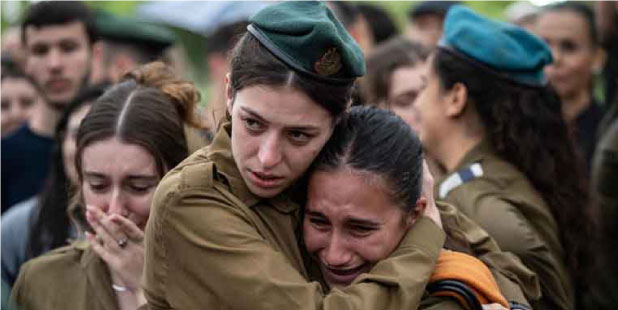
Israel Has The Most Moral Military In The World
April 10, 2024In the heart of a region often riddled with conflict, Israel stands out not only for its technologi...
-
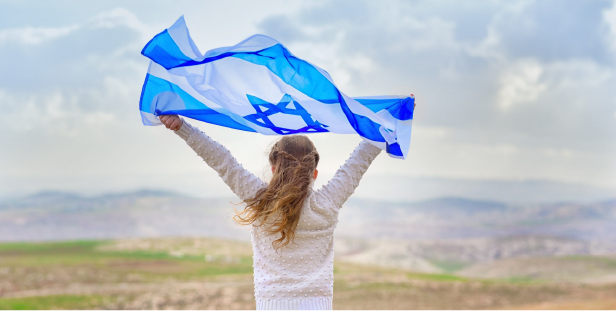
The Resilience of the Israeli People
April 2, 2024Visitors from around the world have seen Hamas's October 7th Massacre's destruction in southern Isr...
-
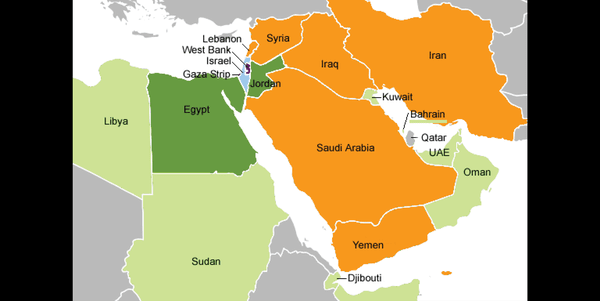
Israel: Small Size, Big Impact
March 21, 2024Nestled along the eastern edge of the Mediterranean Sea, Israel is a land of immense historical sig...
-
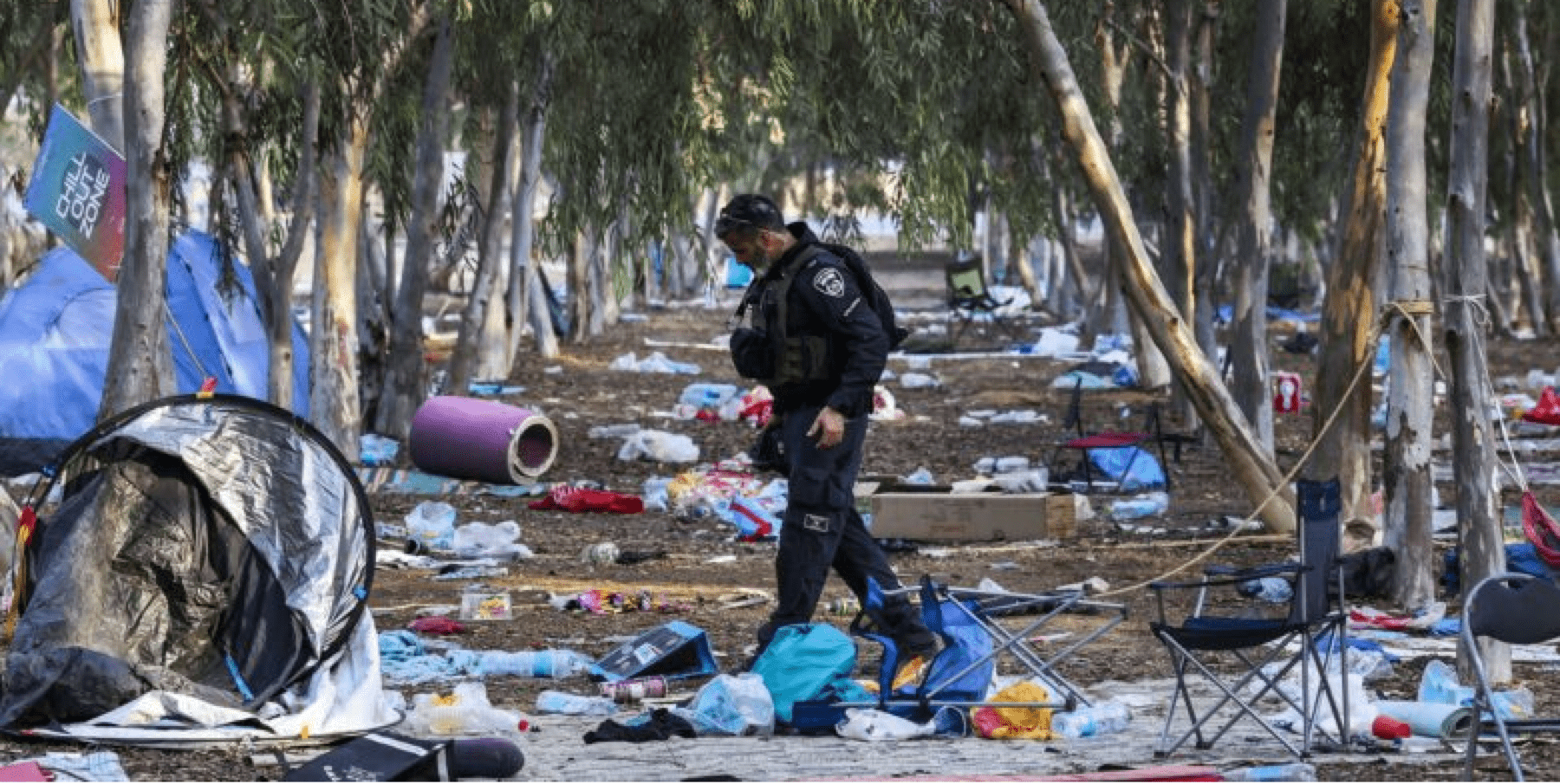
Israelis Are Fighting For Their Lives
February 21, 2024By Jonathan S. Tobin The world looks a lot different from Kibbutz Kfar Aza than it does in the U...
-
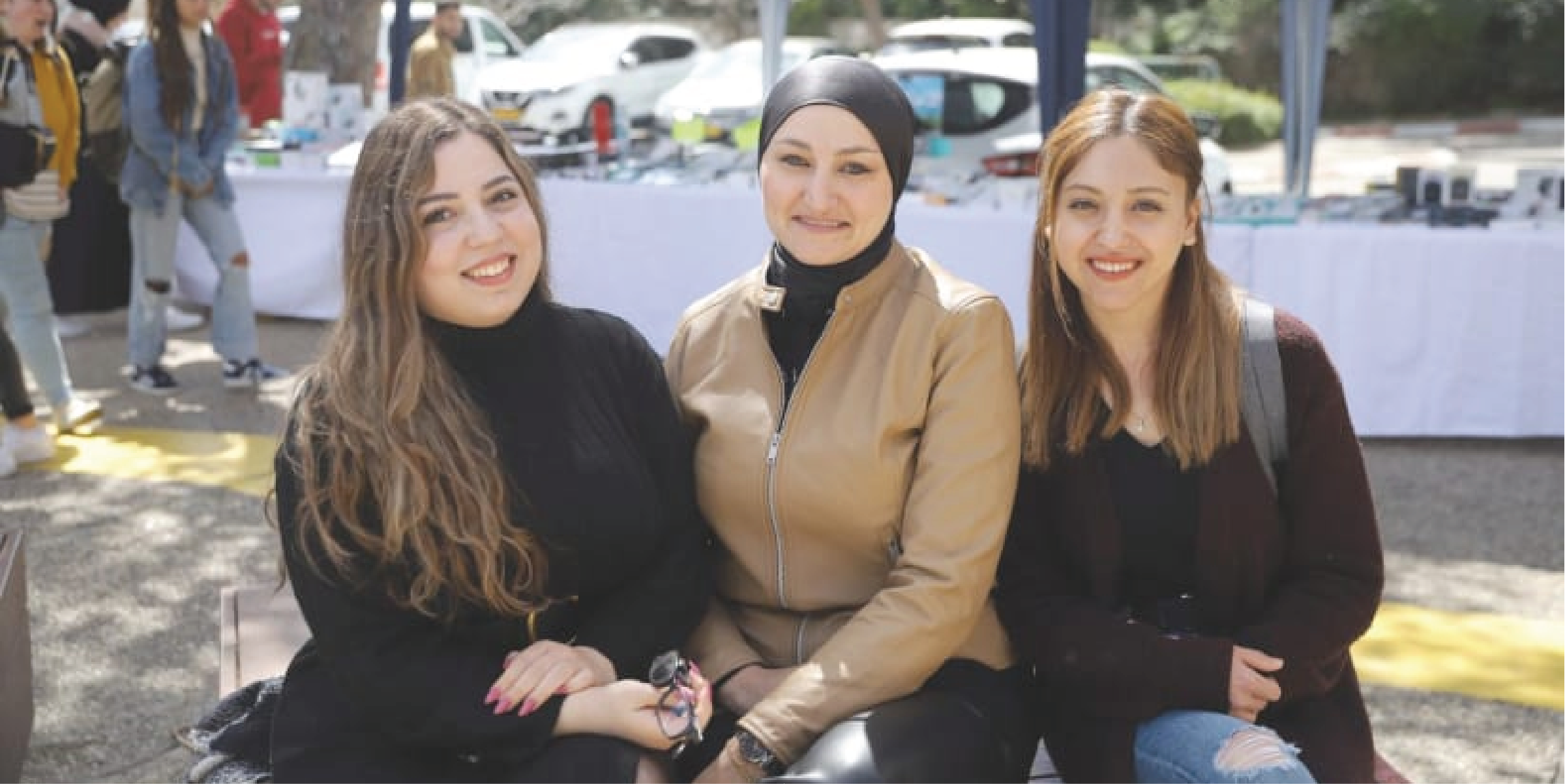
Over 2 Million Arabs Live In Israel
January 23, 2024In the complex landscape of the Middle East, where diverse cultures and identities intersect, Israe...
-
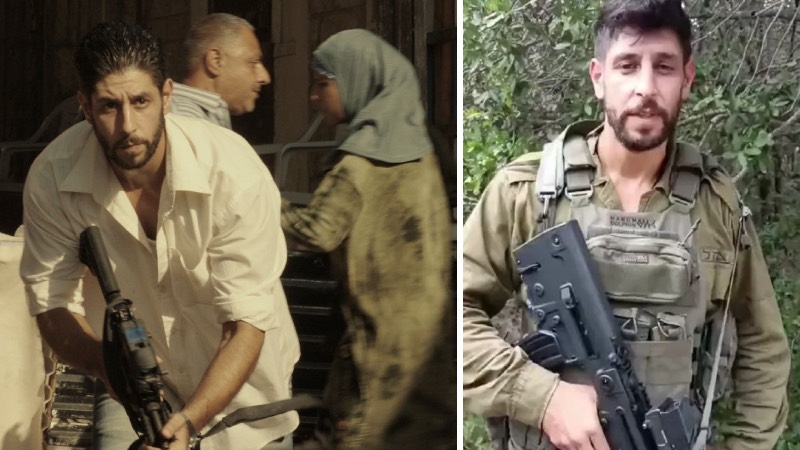
'Fauda' Star Idan Amedi Injured Fighting in Gaza
January 8, 2024Despite the severity of his injuries, Amedi's father assured Israeli news channels that his life is...
-
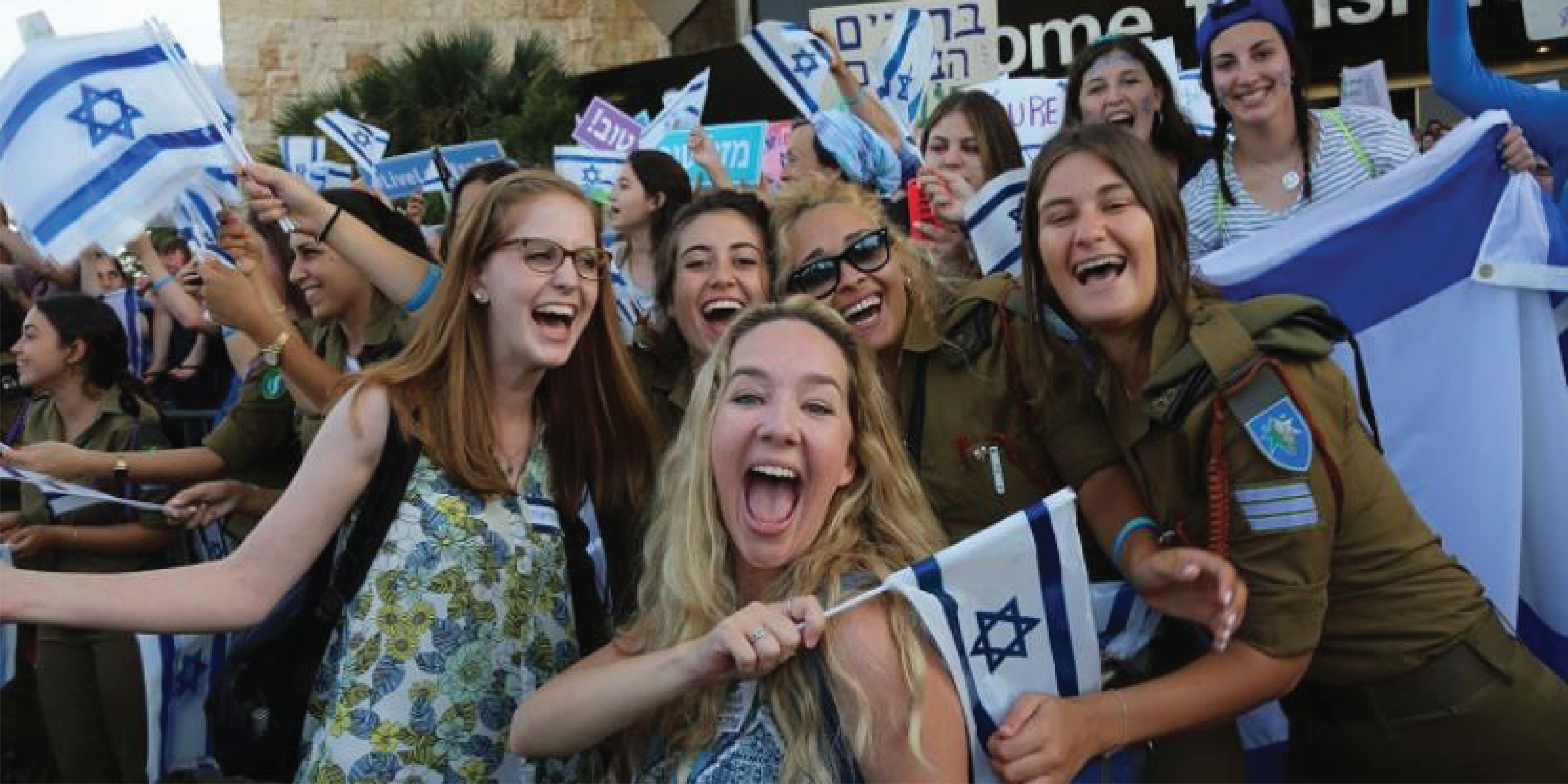
Israel Is A Great Country To Live In
December 28, 2023Nestled at the crossroads of the Middle East, Israel stands as a vibrant and dynamic nation, offeri...
-
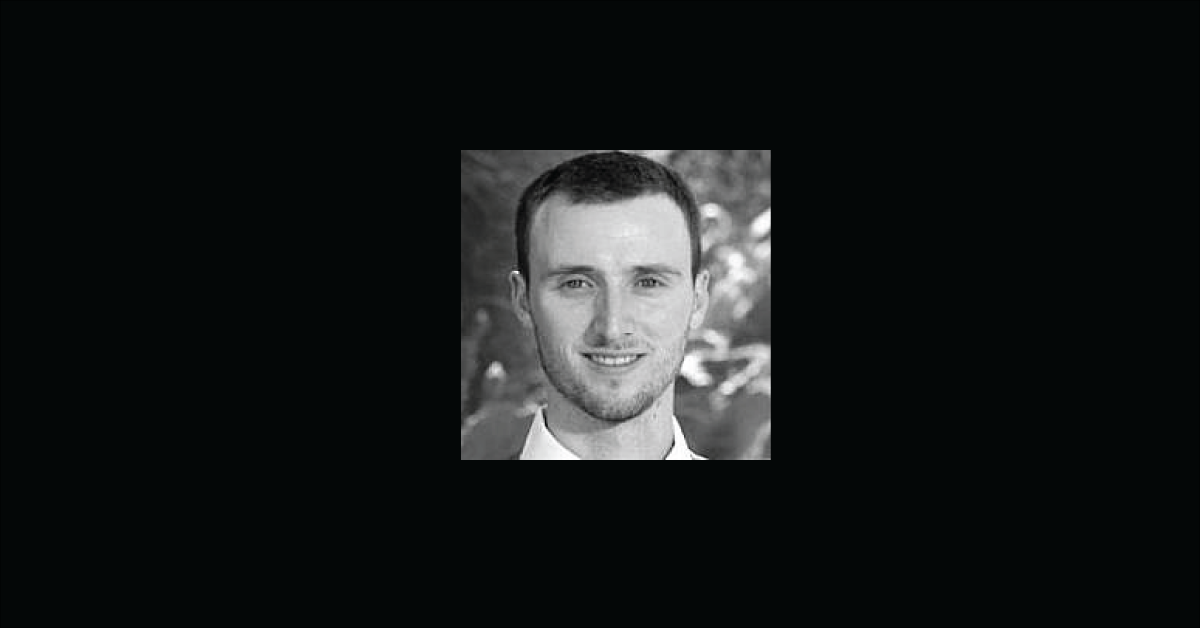
Dear World: I Don't Care
November 2, 2023By Avi Lewis I don’t care that you sympathize with Hamas I know you wouldn’t tolerate any of ...



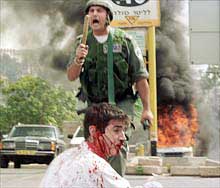
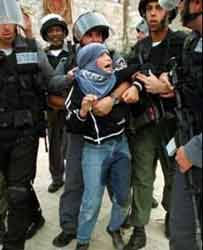
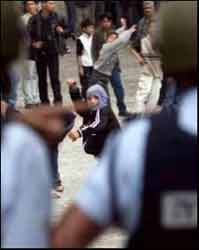


















The Media has been corrupt ever since media started.
Really in-depth article. Great job posting this.